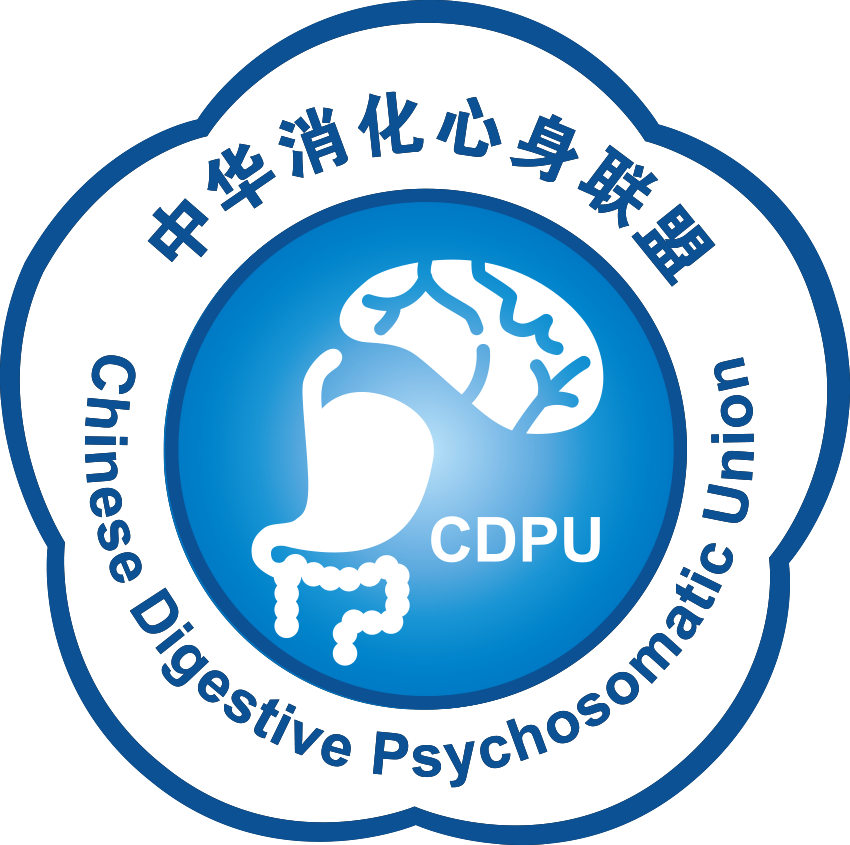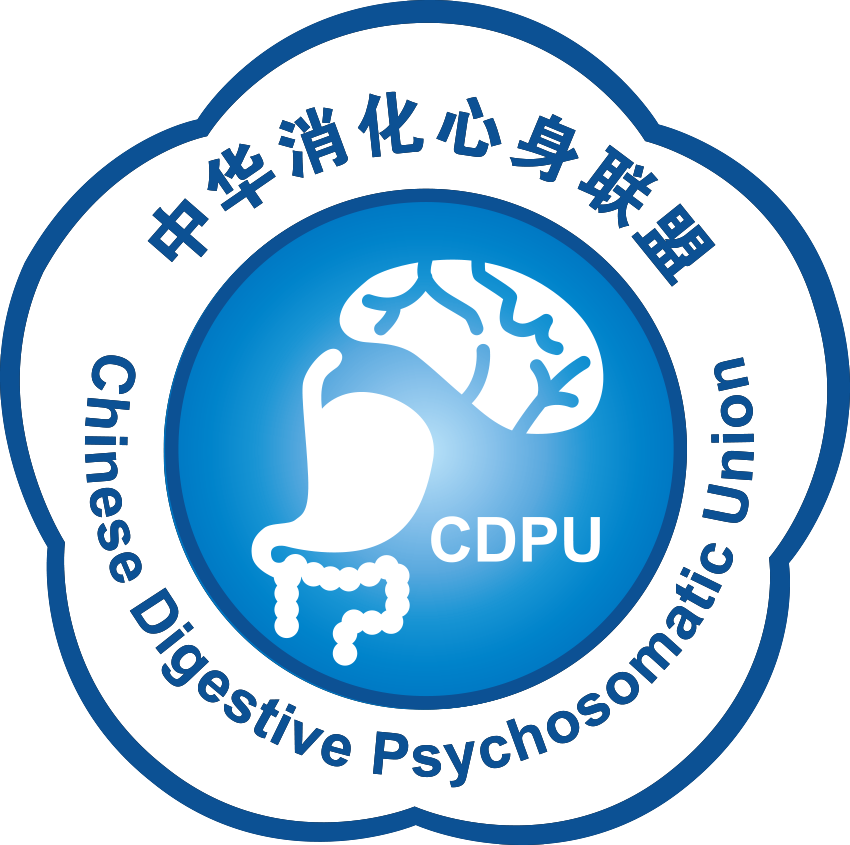Psychosomatic gastrointestinal disorders (Part I)
Introduction
Psychosomatic gastrointestinal disorders (PGIDs), in a broad sense, refer to health problems for which the etiology, pathophysiological mechanisms, and clinical manifestations are associated with both psychological and digestive systems. Clinically, PGIDs comprise not only functional gastrointestinal disorders (FGIDs) but also organic gastrointestinal (GI) diseases, such as inflammatory bowel disease, chronic liver disease, tumors, etc., reflecting the transition of the medical model towards the biopsychosocial model [1,2].
From a specialized perspective, PGIDs can be understood from various angles. (1) From the standpoint of psychiatry and psychological medicine, the essence of PGIDs is the projection of psychological and psychiatric problems in the digestive system. Clinical presentations can be summarized into 4 categories: (i) GI symptoms associated with emotional and mood abnormalities; (ii) GI symptoms associated with cognitive impairments or biases; (iii) Imaginary or suggestible GI symptoms; and (iiii) Changes in biological indicators related to psychological factors. (2) From the perspective of gastroenterology, PGIDs, particularly FGIDs, have been recently defined as disorders of gut-brain interaction (DGBIs), which can be categorized into 3 types: (i) GI disorders with an etiology of psychosocial and behavioral abnormalities; (ii) GI disorders accompanied by manifestations of psychosocial abnormalities; and (iii) GI disorders that respond unsatisfactorily to conventional treatments and need the application of psychosocial therapies to enhance efficacy.
The incidence of PGIDs is rising in recent years. According to a national survey, over 40% of the population suffer from at least one type of DGBIs, such as functional dyspepsia (FD) and irritable bowel syndrome (IBS) [3, 4]. The proportion of organic GI diseases with comorbid psychological presentations is also high. The rate of patients with inflammatory bowel disease (IBD) comorbid with anxiety and depression is 8%-12% [5]. The proportion of depression in patients with cirrhosis is approximately 10%-40% [6] and that of patients with malignant tumors exhibiting anxiety and depression symptoms is 10%-20% [7]. The comorbidity of psychosomatic abnormalities exacerbates patients' symptoms and reduces quality of life.
However, the pathogenesis of PGIDs is not yet fully elucidated, leading to a lack of effective intervention targets. Consequently, inadequate symptom relief may prompt patients with PGIDs repeatedly visit doctors leading to a significant waste of medical resources. This article reviews the latest advances in the pathophysiological mechanisms and symptom characteristics of PGIDs.
The pathogenesis of PGIDs
Increasing evidence suggests that psychological and biological factors are jointly involved in the core mechanisms underlying the symptoms of PGIDs. Furthermore, psychological factors and biological factors are intercausative in the occurrence and development of DGBIs, forming a vicious cycle. Epidemiological results indicate that 40% of patients with FGIDs experience GI symptoms triggered by psychological abnormalities [4].
Biological factors
Visceral hypersensitivity
Visceral hypersensitivity refers to the enhanced response of the GI tract to subthreshold noxious stimuli leading to the development of abdominal pain symptoms. Both central and peripheral nervous systems are involved in the regulatory mechanisms of visceral sensation in the gut. Centrally, psychosocial stress can cause functional changes in brain nuclei, resulting in impaired inhibition of the spinal pain signaling. Peripherally, the vagal afferent nerves are the primary regulatory pathway for visceral sensation in FGIDs. The proximal intestine is mainly regulated by spinal afferent nerves, and rectal pain is mediated by pelvic nerves. Stimulatory factors in the GI tract, such as neurotransmitters, chemical substances, metabolic products, peptide hormones, and inflammatory factors, via stimulating sensory nerve endings, facilitate signal transmission of sensory nerves in the spinal dorsal horn, leading to an amplification of perceived stimulus [8].
GI motility dysregulation
Patients with PGIDs commonly exhibit GI motility abnormalities. In the upper GI tract, motility abnormalities are manifested as delayed gastric emptying and impaired receptive relaxation function. In the lower GI tract, the manifestations vary depending on the specific disease, including enhanced, diminished, or spasmodic intestinal motility. Additionally, some patients may have motility dysfunction across the entire GI tract, which could be a key mechanism for symptom overlap [8].
Low-grade intestinal inflammation
Low-grade intestinal mucosal inflammation is characterized by eosinophilic infiltration (with or without mast cell infiltration), increased intestinal epithelial mucosal permeability, altered microbiota, and immune activation. Evidence suggests that persistent low-grade intestinal inflammation leads to structural and functional changes in neurons innervating the gut, triggering visceral hyperalgesia and GI motility disorders [9].
Abnormal intestinal mucosal permeability
Environmental changes, psychological stress, improper dietary behaviors, and imbalances in nutritional and immune homeostasis can disrupt the intestinal mucosal barrier leading to increased permeability. Harmful food components, microbes, and their products in the lumen can break through the mucosal barrier to elicit inflammatory responses. Notably, these factors, along with the locally produced inflammatory cytokines, can enter the blood circulation eliciting systemic inflammatory syndrome, which causes multiple organ damage including the central nervous system and GI tract. Therefore, a viscous cycle between mucosal barrier dysfunction and exacerbation of pathophysiological processes of PGIDs is formed [10].
Dysbiosis
Evidence has suggested a critical role of the interactions between food antigens and microbes with the immune system within the gut lumen in the development of diet-related GI symptoms. Alterations in duodenal microbiota are associated with mucosal barrier dysfunction and immune activation [9]. Additionally, microbiota changes in the small intestine reportedly alter bile acid content and metabolism. In the colon, the species and abundance of the microbiota are also altered, with increased richness of Enterobacteriaceae, Lactobacillaceae, and Bacteroides, and decreased richness of Clostridiales, Faecalibacterium, and Bifidobacterium in patients with IBS [11]. Alterations in gut microbiota contributes to abnormal gut-brain interactions via directly causing functional dysregulation of the nervous system and immune system, thus participating in the pathophysiology of PGIDs [8].
Psychosocial factors
Central sensitization
It has been confirmed that patients with FGIDs exhibit sensitization of nuclei related to visceral sensation. The brain regions affected by emotional stress include the prefrontal cortex, anterior cingulate cortex (particularly the subgenual anterior cingulate), and insula. Dysfunction of these nuclei causes abnormal GI sensory responses to noxious stimuli, motility disorders, and abnormal mucosal inflammatory responses. Abnormal thinking styles can cause dysfunction of brain regions such as the orbital frontal region, striatum, ventral tegmental area, suprachiasmatic nucleus, and the amygdala, which leads to GI disorders associated with paranoid abnormal sensations and cognitive-behavioral biases [8].
Psychological abnormalities
It has been reported that over 40% of patients with FGIDs have comorbid psychiatric or psychological issues, such as anxiety, depression, panic, and post-traumatic stress [3, 4]. These disorders may precede or occur concurrently with GI symptoms. Pediatric patients with PGIDs also exhibit a higher degree of anxiety and depression. Psychiatric or psychological disorders can lead to abnormal visceral sensory regulation, autonomic nervous dysfunction, and gut motility abnormalities, greatly affecting the quality life of patients [8].
Health-related cognitive abnormalities
Patients with PGIDs often exhibit abnormalities in healthy cognition and methods, such as catastrophic thinking patterns and anxiety about health. Compared to patients with organic GI diseases, patients with FGID pay more attention to the necessity of medication use, especially those with comorbid psychiatric or psychological issues [8].
Environmental factors
The family environment is closely associated with the occurrence of diseases such as IBS. It was reported that a large proportion of patients with FGIDs had suffered from abuse or experienced traumatic stress. Stressful events are related to IBS in adults, heartburn symptoms, abdominal pain in children, and frequent medical consultation behaviors [8].
Symptoms of PGIDs
Emotion-related GI symptoms
Emotional-related GI symptoms can be categorized into two types: manifestations associated with inhibitory emotions and manifestations associated with irritable emotions. (1) Inhibitory emotions, which are the core mental responses to depressive mood, include symptoms such as low mood, loss of pleasure, loss of interest, and loss of energy. GI symptoms associated with inhibitory emotions mainly involve a decrease in gut function, pathologically corresponding to a generalization of discomfort sensations in the GI tract (e.g. inaccurate localization, difficulty in description, and chronic non-healing discomfort). The symptoms include early satiety, bloating, loss of appetite, poor intake, belching, and constipation. (2) Positive emotional responses such as anxiety, irritability, and anger, pathologically corresponding to visceral hypersensitivity and enhanced and uncoordinated motor and secretory functions in GI tract. The symptoms include gastroesophageal reflux, peptic ulcers, borborygmi, and diarrhea [8].
Cognition-related GI symptoms
Cognitive-related clinical manifestations are primarily due to patients' cognitive biases regarding symptoms and diseases, leading to erroneous logical associations. This prompts patients continuously receive and even generate negative suggestions, leading to the prolongation and complexity of symptoms or an increase in symptom severity. The corresponding GI issues often involve paranoid abnormal sensations (such as abnormal oral malodor, globus sensation in the throat, unexplained abdominal pain and bloating, and a feeling of anal obstruction) and cognitive and thought biases (such as paranoid disease attribution, hypochondriasis, and difficulty in communication) [8].
Comorbid GI symptoms in psychiatric disorders
Psychiatric issues such as anxiety, depression, and obsessive-compulsive disorders may lead to GI symptoms such as acid reflux, abdominal pain, bloating, diarrhea, and constipation, with the severity correlated with psychiatric disorders. To avoid the occurrence of GI symptoms, patients may engage in a range of excessive coping behaviors, such as stringent control over their diet and lifestyle, and frequent medical consultations and examinations [12].
Psychological health issues related to organic GI diseases
Psychosomatic issues may participate in the pathogenesis of organic diseases, thereby triggering GI symptoms. They can influence the development and progression of inflammatory GI diseases by affecting immune homeostasis, leading to exacerbation of symptoms in infectious and autoimmune diseases. Positive, mental and psychological issues may enhance humoral and cellular immunity, causing a disequilibrium in homeostasis. On the other hand, negative mental and psychological issues are often related to homeostatic imbalance due to the impaired immune function [13].
Conflicts of interest statement
The author declares no conflicting interest.
Funding
This study was supported by grants from the National Natural Science Foundation of China (Grant Nos. 82170554, 81970473, 81970472, and 81670484).
References
1. Cao JX, Ding LX. Psychosomatic Practice in Gastroenterology: New Insights and Models from China. Psychother Psychosom. 2019;88(6):321-326.
2. Șchiopu CG, Ștefănescu C, Boloș A, et al. Gastrointestinal Disorders with Psychiatric Symptoms: Involvement of the Microbiome-Gut-Brain Axis in the Pathophysiology and Case Management. Microorganisms. 2022;10(11):2199.
3. Hartono JL, Mahadeva S, Goh KL. Anxiety and depression in various functional gastrointestinal disorders: do differences exist? J Dig Dis. 2012;13(5):252-7.
4. Black CJ, Drossman DA, Talley NJ, et al. Functional gastrointestinal disorders: advances in understanding and management. Lancet. 2020;396(10263):1664-1674.
5. Choi K, Chun J, Han K, et al. Risk of Anxiety and Depression in Patients with Inflammatory Bowel Disease: A Nationwide, Population-Based Study. J Clin Med. 2019;8(5):654.
6. Hernaez R, Kramer JR, Khan A, et al. Depression and Anxiety Are Common Among Patients With Cirrhosis. Clin Gastroenterol Hepatol. 2022;20(1):194-203.e1.
7. Pitman A, Suleman S, Hyde N, Hodgkiss A. Depression and anxiety in patients with cancer. BMJ. 2018;361:k1415.
8. Drossman DA, Tack J, Ford AC, et al. Neuromodulators for Functional Gastrointestinal Disorders (Disorders of Gut-Brain Interaction): A Rome Foundation Working Team Report. Gastroenterology. 2018;154(4):1140-1171.e1.
9. Chen SL. Role of duodenal inflammation in functional dyspepsia. Psychosom Gastroenterol 2021;4(2):12-16
10. Hasler WL, Grabauskas G, Singh P, et al. Mast cell mediation of visceral sensation and permeability in irritable bowel syndrome. Neurogastroenterol Motil. 2022;34(7):e14339.
11. Pittayanon R, Lau JT, Yuan Y, et al. Gut Microbiota in Patients With Irritable Bowel Syndrome-A Systematic Review. Gastroenterology. 2019;157(1):97-108.
12. Meuret AE, Tunnell N, Roque A. Anxiety Disorders and Medical Comorbidity: Treatment Implications. Adv Exp Med Biol. 2020;1191:237-261.
13. Person H, Keefer L. Psychological comorbidity in gastrointestinal diseases: Update on the brain-gut-microbiome axis. Prog Neuropsychopharmacol Biol Psychiatry. 2021;107:110209.

